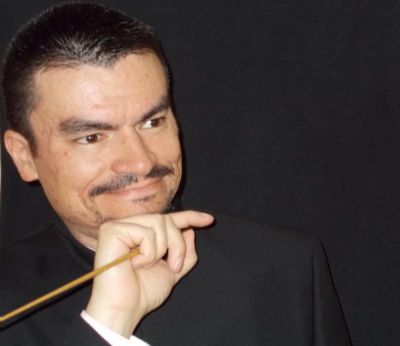|
Symphony
FROM THE NEW WORLD TO THE OLD WORLD
by Peter Lert
Saturday, June 14, 2025
Chamber
MC2 DUO RECITAL CLOSES 222'S SEASON
by Terry McNeill
Saturday, June 14, 2025
Choral and Vocal
CANTIAMO SONOMA'S LUSCIOUS A CAPELLA SINGING IN SEASON ENDING CONCERT
by Pamela Hicks Gailey
Sunday, June 8, 2025
Symphony
SRS SEASON ENDS WITH RESOUNDING TA-TA-TA-BANG
by Terry McNeill
Sunday, June 1, 2025
Symphony
YOUTHFUL VIRTUOSITY ON DISPLAY AT USO'S MAY CONCERTS
by Peter Lert
Saturday, May 17, 2025
Symphony
MYSTICAL PLANETS AND LIVELY GERSHWIN ORTIZ AT FINAL SRS CONCERT
by Peter Lert
Sunday, May 4, 2025
Symphony
VSO'S CONCERT MUSIC OF TIME, MUSIC OF PLACE
by Peter Lert
Sunday, April 27, 2025
VOCAL ELEGANCE AND FIRE AT THE 222'S RECITAL APRIL 26
by Pamela Hicks Gailey
Saturday, April 26, 2025
CANTIAMO SONOMA SINGS AN INSPIRED GOOD FRIDAY MOZART REQUIEM CONCERT
by Pamela Hicks Gailey
Friday, April 18, 2025
DRAMATIC SHOSTAKOVICH SYMPHONY CLOSES PHILHARMONIC'S 25TH SEASON
by Terry McNeill
Sunday, April 13, 2025
|
 |
 So Co Phil Conductor Norman Gamboa |
PROVOCATIVE LATIN WORKS OPEN SO CO PHIL'S NEW SEASON
by Terry McNeill
Saturday, September 26, 2015
Symphonic concerts with Latin programs usually have Copland’s El Salon Mexico, a suite from Chavez, and perhaps some Lecuana or Nazareth. Leave it to the Sonoma County Philharmonic and conductor Norman Gamboa to go in a different direction in their season-opening Latin Fiesta event Sept. 26 in the Santa Rosa High School Auditorium.
The afternoon’s major work, Villa-Lobos’ Bachianas Brasilieras No. 7, is not as well known as numbers 1 and 5, and it the longest and darkest of the set of 8. But it’s a mesmerizing piece, and the SoCoPhil played with panache if not the last word in polish. Mr. Gamboa chose a slower tempo in the opening Prelúdio than one often hears, but all to the better to underscore the work’s tinge of sadness, thick sonority and intriguing harmonies.
Throughout the 1942 composition the conductor’s secure and gracious baton technique brought out the needed contrasts, especially in the more translucent Gigue that has clearer contrapuntal lines. And long lines they were, with standout horn and tuba (Floyd Reinhart) playing. In the following Toccata a surprising strain of movie music (Andrew Lloyd Webber?) appeared, the often blaring phrases and faster tempos accentuated by Tom Hyde’s trumpet, pizzicato playing from the bass section and fascinating percussion sounds that including xylophone and sporadically marimba. All through this Bachiana the percussionists were busy with wood blocks, tiny drums and a brass gong, often in concert with the piccolo (Emily Reynolds) and bassoonist Miranda Kincaid.
The concluding Fuga reflects Bach’s “Art of Fugue” and was a captivating capstone to the performance. It opens with the theme in cellos, then violas, then second violins and bass, and finally the first violins lead the orchestra to solos of flute (Debra Scheurman), oboe (Chris Krive) and finally three pungent trombones. Mr. Gamboa deftly let some phrases overlap, perhaps deciding that at least in this orchestral fugue unclouded sonority was not the goal.
Carlos Guzmán’s Symphony of the Volcanoes comprised the second half, a splashy four-movement suite written by the Costa Rican composer to depict the landscape and ambiance of active Central American volcanoes. In three of the movements scenes of mountains, flora and fauna were projected on the wall behind the 45-person orchestra (the section Rincon de la Vieja was omitted). The colorful display was alternatively engaging and distracting.
Much of the finest playing came in the rhapsodic sections of Poás (Spring Landscape) with piquant chimes, Nick Xenelis’ clarinet and the formidable trumpets of Mr. Hyde, Karl Johnston and Phil Beard.
An atmospheric and slightly bizarre Biribas’ Circus opened the program, part of Brazilian Lucas Galon’s five-part Circus Cycle. Short but not small bursts of orchestral color jump out of an initial soporific sound that is meant to depict a rainy day near a neighborhood circus ring in Brazil. Unique sounds from indigenous instruments abound, including the alto flute and a metal cylindrical instrument held between the hands that emits a muffled cry when a coated stick is rapidly inserted. One either likes these effects or doesn’t, and I am in the former category. A provocative sonic delight.
The conductor spoke entertainingly to the audience about the unfamiliar music in a pre-concert talk, and as in past SoCoPhil concerts a member of the all-volunteer orchestra did the housekeeping announcements. Mr. Hyde was insouciant in this role.
A small but vociferous audience was in the hall for the first of the two Latin Fiesta concerts, with more familiar fare (Barber, Copland, Gershwin) expected Nov. 14 and 15 to attract larger houses. The Orchestra played parts of the Latin-inspired works to students in the same hall the afternoon of the concert, in a bi-lingual presentation to considerable acclaim.
|

